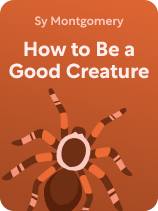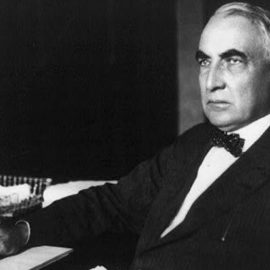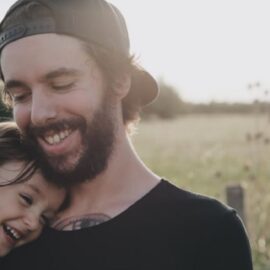

This article is an excerpt from the Shortform book guide to "How to Be a Good Creature" by Sy Montgomery. Shortform has the world's best summaries and analyses of books you should be reading.
Like this article? Sign up for a free trial here.
What’s the book How to Be a Good Creature about? How did Sy Montgomery’s animals change her life?
In How to Be a Good Creature, Sy Montgomery examines how the wisdom and companionship of animals helped her find her calling as a traveler and nature writer, appreciate animals and people in new ways, and cultivate love and community. These animals taught her how to be more curious, compassionate, friendly, loving, and much more.
Read below for a brief overview of How to Be a Good Creature.
Overview of How to Be a Good Creature
What can our relationships with other animals teach us? That’s the question naturalist Sy Montgomery addresses in her book, How to Be a Good Creature. She explores the lessons about life and love she learned from various animals who touched her life, from a tiny pinktoe tarantula in French Guiana to her beloved 750-pound pet pig named Christopher.
Montgomery is a bestselling nature author who travels the world to research the animals she writes about. She writes for children and adults with the goal of helping us understand our connections to the other creatures that inhabit our planet. Her other books include The Hawk’s Way, The Soul of an Octopus (2015 National Book Award Finalist), and The Good, Good Pig. In addition to writing books, she writes for television and film documentaries.
Finding a Calling
Montgomery explains that she was drawn to animals and nature from the time she was a child growing up as a general’s daughter on different US Army bases in the 1960s. Several key relationships with animals fostered her interest in the natural world, leading her to find her calling as a nature writer.
In this section, we’ll look more closely at two connections she made: with her childhood dog and with wild emus on her first research expedition.
Molly the Scottish Terrier
Montgomery credits her childhood dog, a Scottish terrier named Molly, for sparking her interest in the natural world and her fascination with wildness. From the time she was a puppy, Molly embodied the traits Scotties are known for: She was independent, difficult to train, and an avid, confident hunter despite her small size.
While growing up, Montgomery looked to Molly as a role model, as another child might view an older sibling. Montgomery spent her childhood closely observing Molly and admiring everything about her, from her self-sufficiency to her strong teeth. She watched Molly chase small animals, use her keen sense of smell to discover hidden things, and roam freely. This admiration and interest in Molly’s wildness encouraged Montgomery to engage with other animals and their unique perspectives.
The Australian Emus
Molly sparked Montgomery’s passion for animals and the natural world, but it was Montgomery’s bond with three Australian emus that solidified her decision to work with animals and write about them for a living. After working in journalism for several years, Montgomery traveled to Australia with a nonprofit organization that hosted scientific expeditions for nonscientists like herself.
In the two weeks she spent working with a conservation biologist, Montgomery developed such a passion for studying and being present with animals in their natural habitats that she decided to quit her job in the US and return to Australia. Montgomery began independently researching the behaviors of three young emus she encountered while assisting with other projects.
Montgomery followed the emus every day. As she spent more time with them, she witnessed aspects of their unique personalities, such as the enjoyment they seemed to get from teasing a tied-up dog. By the time she had to leave the emus and go back to the US, Montgomery realized that she never wanted to return to a regular office job. The enjoyment and calm she got from spending time with the emus inspired her to travel, meet more animals, and write about her experiences with them.
Appreciating Animals and People in New Ways
After deciding to become a nature writer, Montgomery had many experiences with animals that helped her appreciate animals and people in new ways. In this section, we’ll look at the lessons she learned from two of those animals: a pinktoe tarantula and a chicken-stealing ermine.
Clarabelle the Tarantula
Montgomery’s experience with a pinktoe tarantula taught her how to appreciate the beauty and individuality of a species she previously feared. She describes how on a research trip to French Guiana, she was offered the chance to hold a tarantula that resided in the research team’s living quarters. Despite her fear of spiders, her curiosity drove her to accept.
As Montgomery held the tarantula, she recognized the small animal’s individuality. Instead of viewing her as just a representative of a scary species, Montgomery began to feel an attachment to the tarantula—she felt a responsibility to care for and protect the little creature. She noticed her gentle, docile nature and her grace. As the trip went on, Montgomery’s affection for the spider—later named Clarabelle—increased, and her presence made Montgomery feel more at home.
Montgomery’s relationship with Clarabelle gave her a new appreciation for all spiders, opening her up to a whole different world that exists on a much smaller scale. When she returned to the US, she noticed and enjoyed the spiders around her home—creatures she never would’ve considered before.
The Chicken-Stealing Ermine
Another animal who altered Montgomery’s perspective was an ermine—a member of the weasel family—who killed and stole one of her beloved chickens. One winter day, Montgomery found one of her chickens dead in their coop. When she tried to pick the chicken up, she came face-to-face with a snowy white ermine—the animal who had killed the hen.
The ermine stared back at Montgomery as if challenging her. She expected to feel anger toward the ermine because she loved the hen it killed. Instead, Montgomery found herself admiring it for its impressive feat and its fierce bravery in the face of a much larger creature like herself.
The ermine reminded Montgomery of her mother. Like the ermine, Montgomery’s mother had caused Montgomery a lot of hurt—she could be ill-tempered, controlling, and cruel as a parent. However, she was also a woman who escaped poverty, went to college, and built a career and a family at a time when societal norms made it difficult for a woman to do any of those things. Montgomery’s mother and the ermine were both individuals who succeeded against unlikely odds through their daring and determination.
After this experience, Montgomery’s perspective on her mother—who had died earlier that year—changed. She realized that she missed her mother deeply, despite their difficult relationship. Likewise, she found a new sense of admiration for all that her mother had accomplished.
Cultivating Love and Community
After moving frequently as a child due to her father’s military career, Montgomery felt truly at home for the first time in her life when she and her husband Howard settled into their farmhouse in a small New Hampshire town. It had eight acres and a barn, and it served as her home base between her research travels.
In this final section, we’ll explore the animals who shared Montgomery’s New Hampshire home. These animals taught Montgomery important lessons about love and community. First, we’ll discuss how two border collies she adopted each introduced a new type of love into her life. Then, we’ll look at her special relationship with her pet pig, Christopher, and the community he helped her build.
The Border Collies
In their many years at the farmhouse, Montgomery and her husband Howard rescued several border collies. Let’s look at the lessons about love that Montgomery learned from two of them: Tess and Sally.
Tess
According to Montgomery, her first border collie Tess taught her lessons about how to trust others, be resilient, and love life even when your circumstances change. Montgomery and her husband got Tess from a rescue when she was two years old. By that point, Tess already had a difficult past, but she was a loving and active dog.
Tess loved to chase frisbees in the field surrounding Montgomery’s home. Montgomery particularly enjoyed playing frisbee with her at night—Montgomery would throw the frisbee blindly in the dark, and Tess would always find it with her canine night vision and bring it back. Tess guided Montgomery patiently through the dark, and they developed a bond of love and trust through this ritual.
As Tess got older, she lost her hearing and began to lose her vision, which meant she could no longer play frisbee as she had in the past. At first, Montgomery despaired over Tess’s new limitations, terrified of her dog’s mortality. However, she soon realized that Tess seemed to love her life just as much as she had before. Tess was content to switch roles with Montgomery on their nightly outings, allowing Montgomery to lead her around on walks in the dark.
Tess’s contentment just to be around the people she loved showed Montgomery how to appreciate the simple joys of life. Additionally, the trust and affection Tess showed on their nighttime walks was a type of love Montgomery had never experienced before. Tess trusted her enough to entirely depend on her, and the collie’s strength of spirit through all her difficulties moved Montgomery deeply.
Sally
Sally was the second border collie Montgomery and Howard rescued. She was different from Tess in almost every way, but Montgomery still loved her—proving there’s no limit to the amount of love we can offer.
After Tess and Christopher (whom we’ll discuss in the next section) passed away, Montgomery went through a period of intense grief and depression. She couldn’t picture a future without them in her life, and she wasn’t ready to think about adopting another dog.
Montgomery’s reluctance to adopt another dog changed when she had a dream where Tess appeared to her and then transformed into a different border collie. Montgomery saw that as a sign that it was time to get a new dog, and she set out to find the collie from her dream. After a long search, she and her husband found a border collie at the same rescue they’d adopted Tess from. To Montgomery, it felt like fate, and she was certain that this was the dog from her dream.
They named the dog Sally, and she proved to be opposite from Tess in almost every way—she didn’t like to play fetch, and she loved to get into mischief and steal household items. Unlike Tess, who’d been more interested in playing than cuddling, Sally loved affection. Despite these differences, Montgomery loved Sally just as much as she loved Tess. In her unique way, Sally filled the hole that Tess had left, and she proved to Montgomery that her love had no limits—it only expanded to fit Sally.
Christopher the Pig
Finally, Montgomery’s pet pig—Christopher Hogwood—gave her a wealth of love, family, and community that she’d never experienced before. Chris was the runt of his litter, and Montgomery and her husband got him from a farmer close to their New Hampshire home. From the beginning, he had a boisterous, friendly personality. Montgomery became enamored with him.
Chris’s open and loving personality helped Montgomery build a network of new friends. Chris enjoyed meeting new people, so he often broke out of his enclosure to visit the surrounding neighbors. By the time Montgomery arrived to lead him back home, the people he visited were always delighted by Chris. These interactions gave Montgomery a perfect entry point to get to know people—everyone was happy to talk about Chris.
Soon, Montgomery and Howard began inviting people to bring Chris their leftover food and watch him eat. She and Howard developed a particularly close relationship with a single mom who lived with her two daughters next door. The girls visited Chris often, and they became surrogate daughters for Montgomery and Howard, who didn’t have children of their own. Because of the love that Chris extended to everyone he met, Montgomery gained a nontraditional family. He showed her that family isn’t just based on having the same blood—or being the same species—and home is where you’re loved and accepted.

———End of Preview———
Like what you just read? Read the rest of the world's best book summary and analysis of Sy Montgomery's "How to Be a Good Creature" at Shortform.
Here's what you'll find in our full How to Be a Good Creature summary:
- Lessons about life and love that naturalist Sy Montgomery learned from animals
- How to appreciate animals and people in new ways
- How to be more curious, compassionate, friendly, and loving






